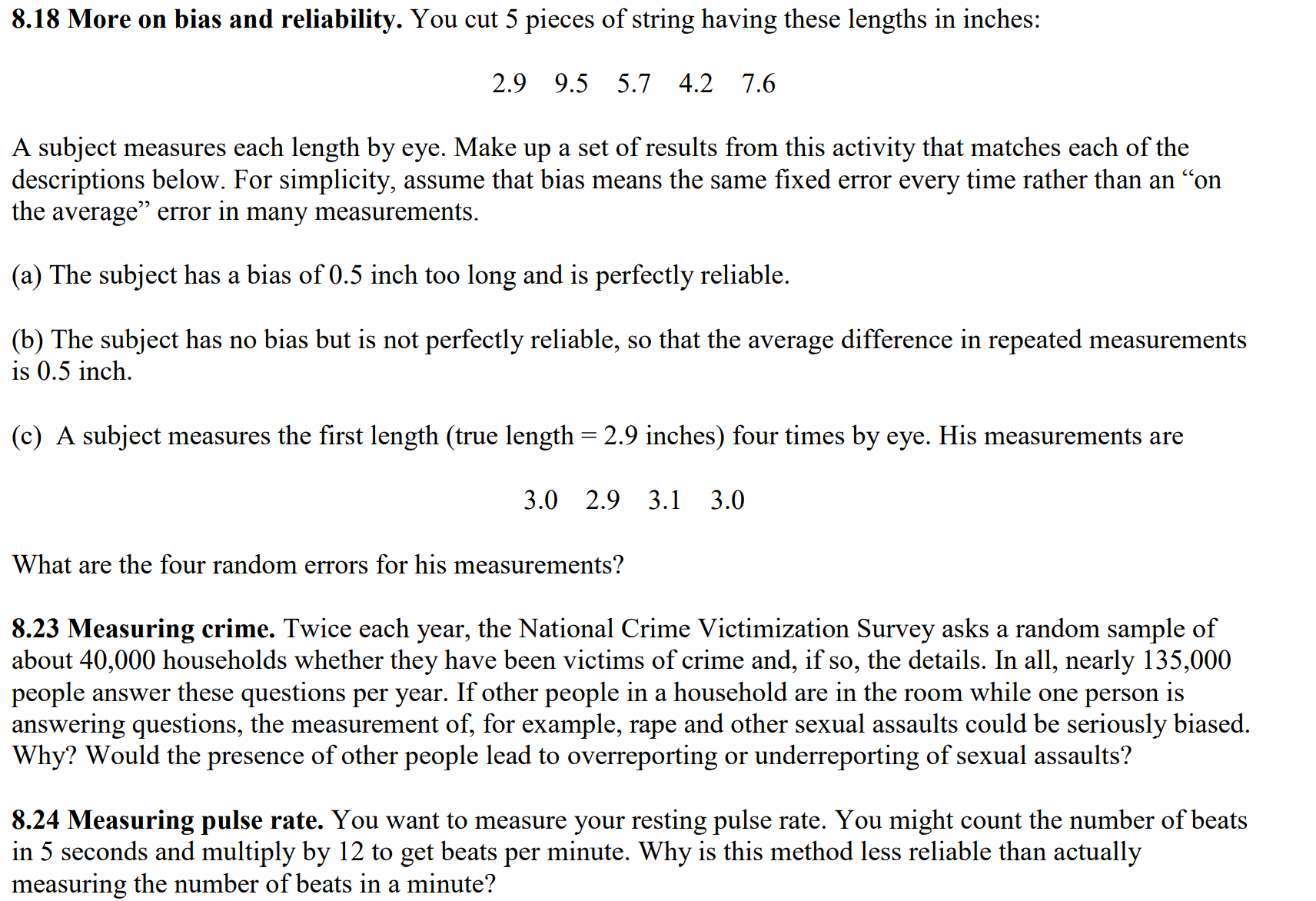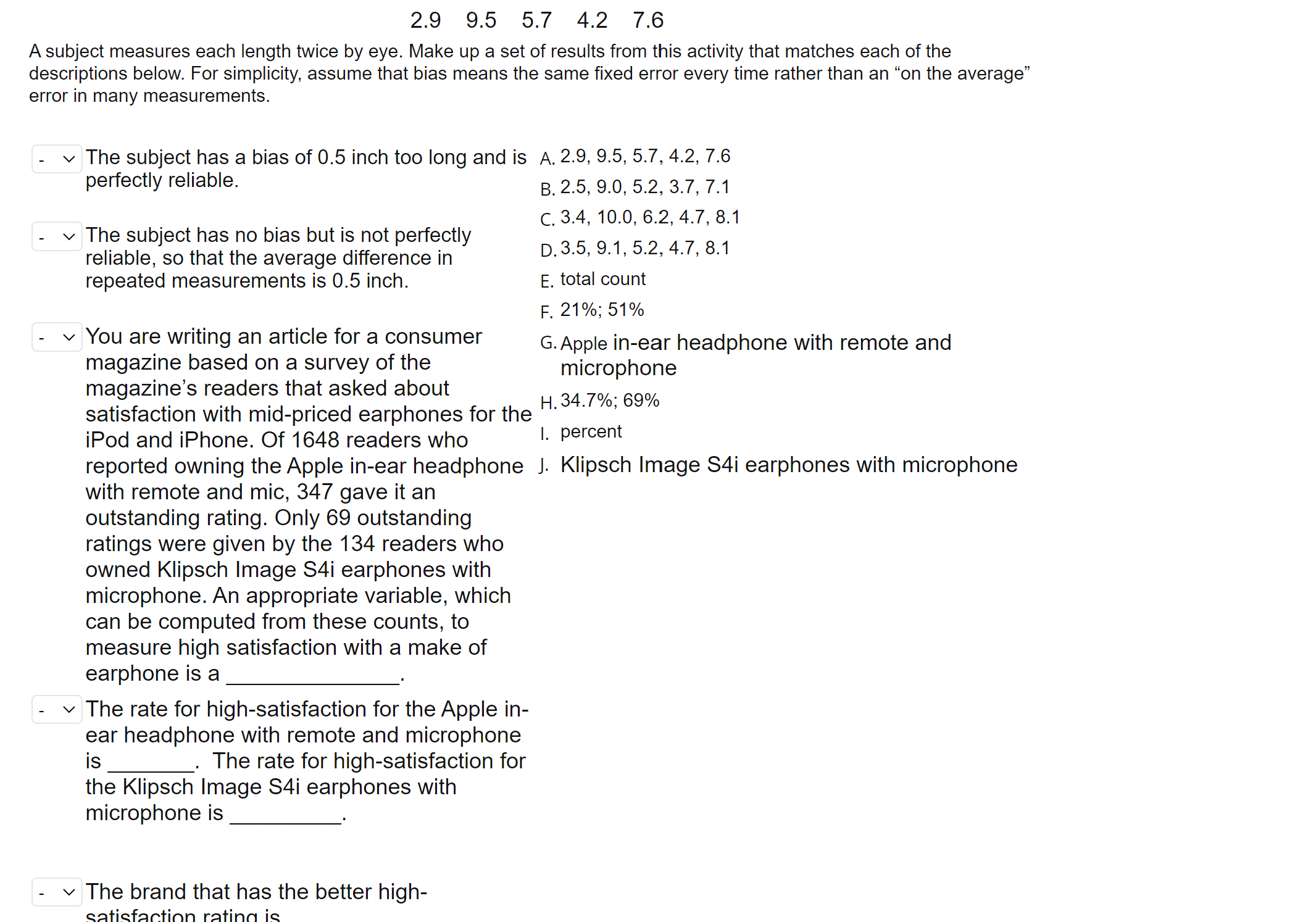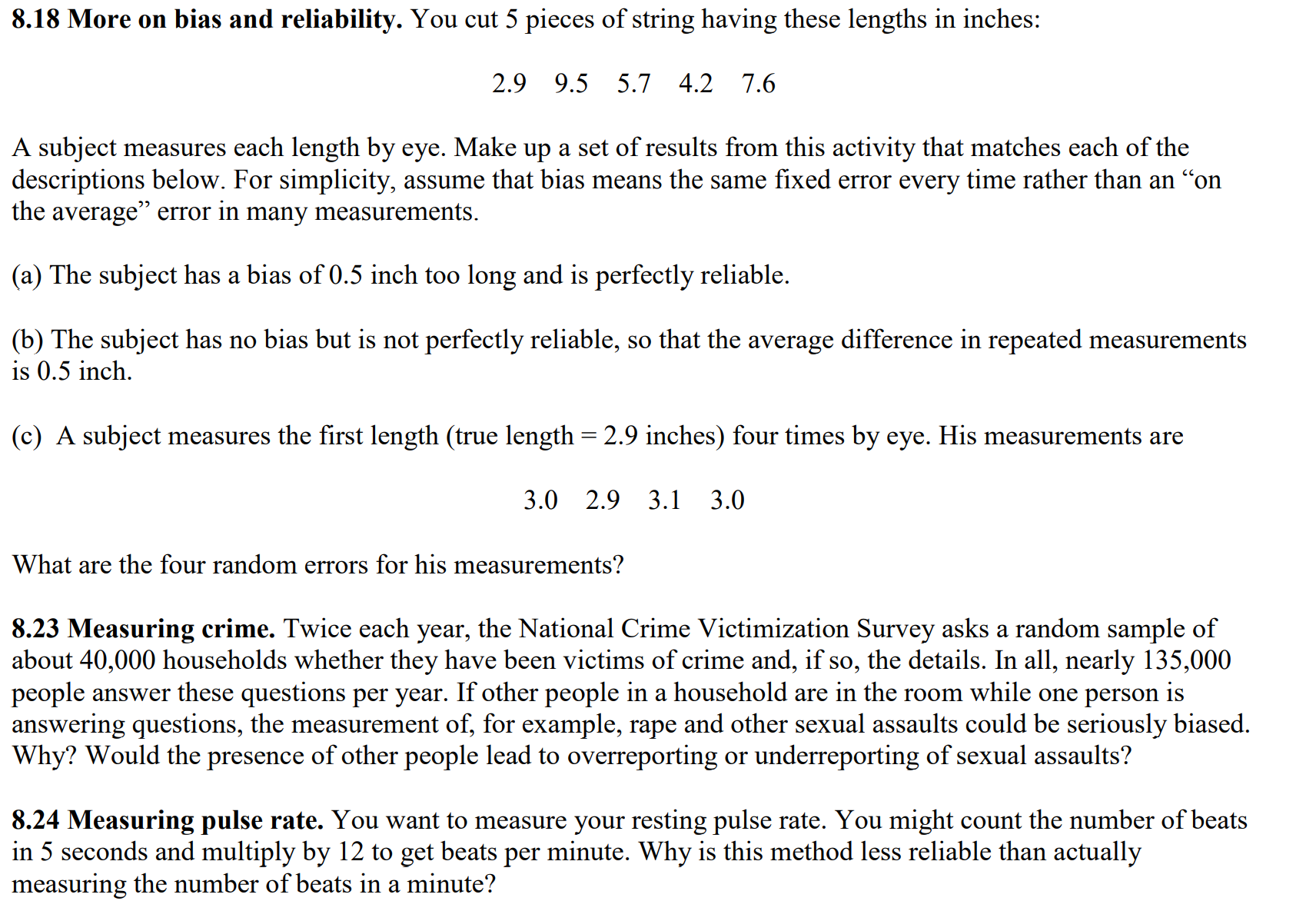
2.9 9.5 5.7 4.2 7.6 A subject measures each length twice by eye. Make up a set of results from this activity that matches each of the descriptions below. For simplicity, assume that bias means the same fixed error every time rather than an \"on the average" error in many measurements. _ v The subject has a bias of 0.5 inch too long and is A. 2.9, 9.5. 5.7. 4.2, 7.6 perfectly reliable. B_ 2.5, 9.0, 5.2, 3.7, 7.1 c, 3.4, 10.0, 6.2, 4.7, 8.1 _ v The subject has no bras but Is not perfectly D.3.5, 9-1, 5-2! 4.7, 8.1 reliable, so that the average difference in repeated measurements is 0.5 inch. E. total Count F. 21%; 51% - v You are writing an article for a consumer G.Apple in-ear headphone with remote and magazrne based on a survey of the microphone magazine's readers that asked about H 34 7% 69% satisfaction with mid-priced earphones for the ' ' ' iPod and iPhone. Of 1648 readers who '- percent reported owning the Apple in-ear headphone J. Klipsch Image S4i earphones with microphone with remote and mic, 347 gave it an outstanding rating. Only 69 outstanding ratings were given by the 134 readers who owned Klipsch Image S4i earphones with microphone. An appropriate variable, which can be computed from these counts, to measure high satisfaction with a make of earphone is a - v The rate for high-satisfaction for the Apple in- ear headphone with remote and microphone is . The rate for high-satisfaction for the Klipsch Image S4i earphones with microphone is - v The brand that has the better high- entiefsmtinn ratinn i9 8.18 More on bias and reliability. You cut 5 pieces of string having these lengths in inches: 2.9 9.5 5.7 4.2 7.6 A subject measures each length by eye. Make up a set of results from this activity that matches each of the descriptions below. For simplicity, assume that bias means the same xed error every time rather than an \"on the average\" error in many measurements. (a) The subject has a bias of 0.5 inch too long and is perfectly reliable. (b) The subject has no bias but is not perfectly reliable, so that the average difference in repeated measurements is 0.5 inch. (c) A subject measures the first length (true length = 2.9 inches) four times by eye. His measurements are 3.0 2.9 3.1 3.0 What are the four random errors for his measurements? 8.23 Measuring crime. Twice each year, the National Crime Victimization Survey asks a random sample of about 40,000 households whether they have been victims of crime and, if so, the details. In all, nearly 135,000 people answer these questions per year. If other people in a household are in the room while one person is answering questions, the measurement of, for example, rape and other sexual assaults could be seriously biased. Why? Would the presence of other people lead to overreporting or underreporting of sexual assaults? 8.24 Measuring pulse rate. You want to measure your resting pulse rate. You might count the number of beats in 5 seconds and multiply by 12 to get beats per minute. Why is this method less reliable than actually measuring the number of beats in a minute









